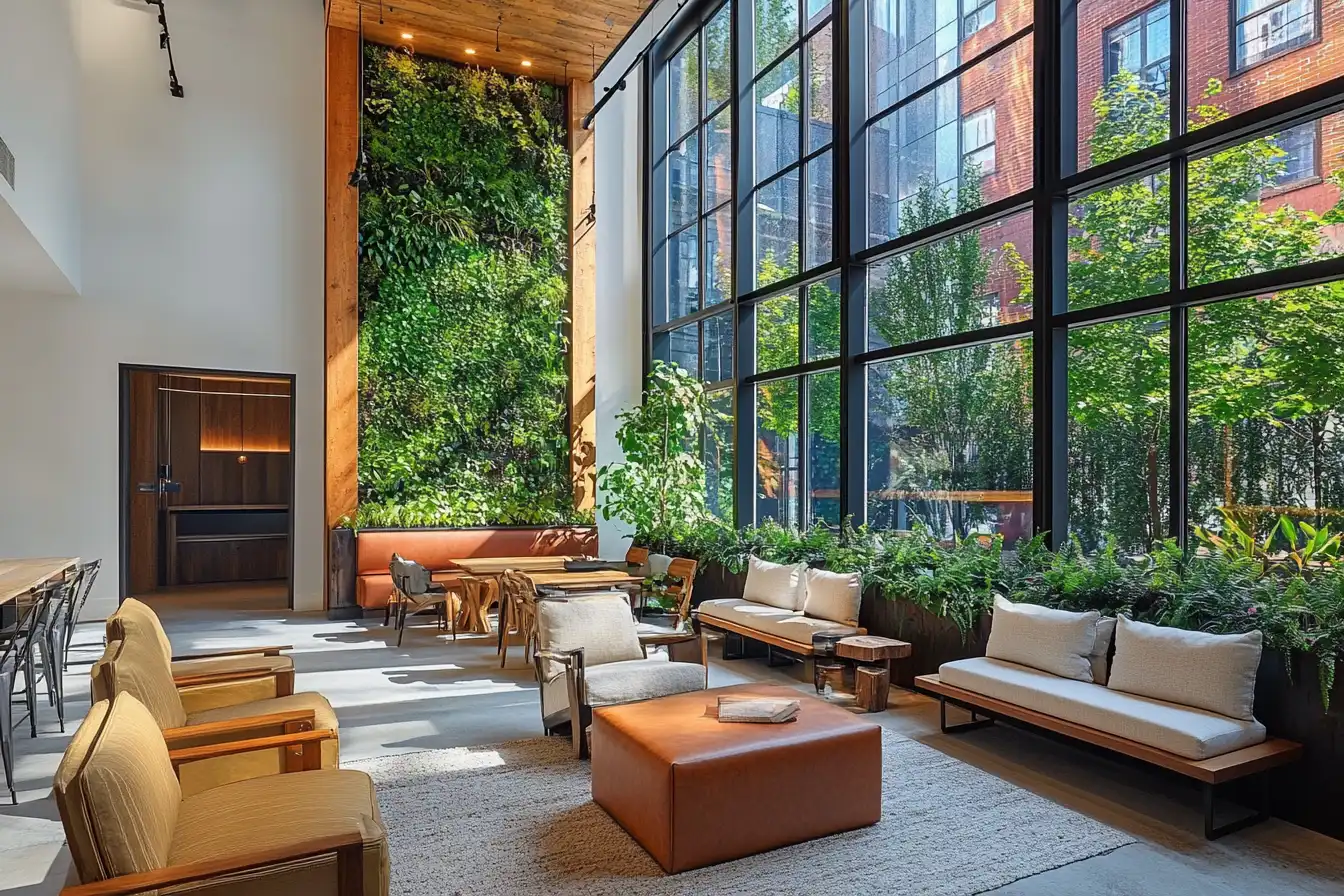In the ever-evolving world of interior design, our homes have become more than just places to live—they’re reflections of our personal style and sanctuaries of comfort. As we seek to transform our living spaces, it’s crucial to stay updated with the latest furniture trends that promise both functionality and flair. Whether we’re looking to create a cozy retreat or a modern masterpiece, understanding these trends can guide us in making informed choices.
From sustainable materials to bold color palettes, the current design landscape offers a plethora of options to suit our tastes. We’re witnessing a shift towards designs that prioritize both aesthetics and sustainability, making it easier than ever to create a home that’s as stylish as it is eco-friendly. Let’s explore how these top furniture trends can breathe new life into our homes, transforming them into spaces that truly resonate with who we are.

Understanding Current Interior Design Trends
Interior design trends reflect society’s evolving priorities and tastes. Today, sustainability takes center stage as we see a shift towards environmentally-friendly materials. Examples include bamboo flooring and reclaimed wood furniture, which reduce waste and contribute to sustainable living. This trend combines sustainability with aesthetics, making eco-friendly choices more accessible and stylish.
We also notice the rise of biophilic design, encouraging a connection with nature. Incorporating elements such as indoor plants, natural light, and earthy textures transforms spaces into tranquil retreats. The use of multi-functional furniture, like convertible sofas and expandable tables, addresses the needs of smaller urban living spaces while maximizing utility without sacrificing style.
Bold color palettes introduce vibrancy into interiors. Rich jewel tones, vivid greens, and deep blues serve as focal points, breaking away from traditional neutrals. This approach allows for personalization and expression, with accent pieces like rugs and cushions creating distinct zones within open spaces.
Technology integration is essential in modern homes. Smart furniture, which includes built-in charging stations and voice-activated features, offers convenience while maintaining a sleek design. This fusion of tech and design enhances functionality and aligns with a tech-driven lifestyle.
These trends provide inspiration for transforming homes into personalized, functional, and innovative spaces. By understanding and embracing these current trends, we can create interiors that reflect both our values and personal taste.
Innovative Furniture Designs
Innovative furniture designs redefine how we perceive interior spaces. They seamlessly blend style with functionality, pushing the boundaries of traditional aesthetics.

Sustainable Materials
Sustainable materials are pivotal in the latest furniture innovations. As awareness grows, consumers increasingly seek eco-friendly options. We find materials like bamboo and reclaimed wood not only sustainable but also incredibly stylish. Bamboo’s rapid growth makes it an excellent renewable resource, while reclaimed wood adds character and history to any piece. By choosing these materials, we contribute to a healthier planet without sacrificing design appeal.
Multi-Functional Pieces
Multi-functional pieces offer ingenious solutions for modern living. With urban spaces shrinking, the demand for furniture that maximizes space is rising. We see designs like sofa beds and extendable dining tables becoming staples in homes. Sofa beds provide seating by day and a bed by night, perfect for small apartments. Extendable tables accommodate intimate dinners and larger gatherings, optimizing space when needed. These designs cater to our needs for practicality while maintaining style.
Color Trends in Furniture
In the realm of interior design, color trends play a transformative role. They dictate the vibe and emotional resonance of any living space.

Bold Color Statements
Bold colors make a striking impact in furniture design. Rich jewel tones like emerald green, deep sapphire blue, and ruby red introduce sophistication and depth. These hues, when applied to statement pieces such as armchairs or sofas, create focal points in a room. For instance, a vibrant yellow couch can lift the energy of a space, especially when balanced with neutral wall colors.
Neutral Tones and Natural Elements
Neutral tones provide versatility and calm in furniture design. Shades like beige, taupe, gray, and off-white serve as a backdrop, allowing other elements to shine. Pairing these neutral hues with natural materials enhances warmth and texture. For example, a gray linen couch paired with a reclaimed wood coffee table harmonizes effortlessly, creating a serene environment. Natural elements, like rattan or jute, further complement these tones, fostering a cohesive and inviting atmosphere.
Incorporating Technology in Furniture
In the fast-paced world of interior design, integrating technology can elevate the functionality and appeal of our living spaces. Advanced furniture options combine convenience with modern aesthetics, creating smart homes that cater to contemporary lifestyles.

Smart Furniture Solutions
Smart furniture introduces innovative elements that make daily life easier. Examples include pieces with built-in wireless charging stations, allowing us to power devices effortlessly. Adjustable smart desks offer ergonomic support with automated height settings and integrated Bluetooth speakers for a seamless work-from-home experience. Some sofas and beds even come with embedded smart thermostats to regulate temperature, ensuring optimum comfort.
Ergonomic Designs
Ergonomic designs in furniture prioritize health and comfort, essential for those of us spending extended periods at home. Chairs with adjustable lumbar support and height settings adapt to our bodies, reducing strain during prolonged use. Desks with adjustable surfaces accommodate both seated and standing work preferences, promoting better posture. Incorporating these designs into our homes not only enhances well-being but also aligns with the trend for personalized functionality.
Space-Saving Ideas
Efficiently utilizing every inch of our homes is essential, especially in smaller spaces. Current furniture trends help us maximize function and style without compromising on comfort.

Modular and Convertible Furniture
Modular and convertible furniture plays a critical role in adapting spaces to our needs. Sofa beds transform living rooms into guest spaces, while sectional sofas offer rearrangements to suit room layouts. Convertible tables adjust from coffee table height to dining table height, accommodating both intimate dinners and large gatherings. For apartment dwellers, a bookshelf that doubles as a room divider creates an instant partition without permanent installation.
Storage Solutions
Effective storage solutions contribute significantly to decluttered spaces. Furniture with integrated storage, such as ottomans and beds with built-in drawers, helps keep essentials organized. Floating shelves offer stylish vertical storage without occupying floor space, making them perfect for displaying decor or storing books. Kitchen islands with cabinets provide extra space for utensils and cookware, enhancing both functionality and aesthetics.
Tips to Transform Your Home
Exploring current furniture trends allows for a fresh, stylish transformation of living spaces. By focusing on personalization and balance, we can redefine our homes to meet both aesthetic and functional needs.

Personalizing With Accessories
Accessories offer endless possibilities for adding personal touches. We can introduce throw pillows with bold textures or artwork that aligns with our taste, creating focal points. Rugs are another excellent choice for warmth, defining spaces in open-plan layouts. Lighting fixtures, like statement lamps, enhance ambiance while reflecting personal style. Accessorizing with plants introduces biophilic elements, promoting a more serene environment and aiding well-being.
Balancing Aesthetics and Functionality
Achieving harmony between beauty and practicality is key. We can select multifunctional furniture, such as storage ottomans, to blend form and utility. It’s important to consider the room’s layout; arranging furnishings to ensure traffic flow optimizes both function and aesthetics. Smart furniture, integrated with tech features, exemplifies this balance by offering convenience without compromising modern design. We can choose color schemes that enhance the setting’s mood while maintaining versatility for evolving preferences.
Conclusion
Through embracing contemporary furniture trends, we can effectively transform our homes into spaces that are both stylish and sustainable. By incorporating elements like sustainable materials, multi-functional designs, and bold color palettes, we create environments that reflect our personal ethos and modern living needs. Technology integration and space-saving solutions further enhance our ability to optimize our spaces, providing convenience and practicality. By staying attuned to these trends, our homes become vibrant reflections of our values and individual style.
- contemporary furniture ideas
- custom interior furniture
- eco-friendly furniture design
- fashionable home furniture
- functional furniture trends
- furniture decor trends
- high-end furniture styles
- home transformation furniture
- innovative furniture design
- interior design trends
- luxury furniture trends
- minimalist furniture design
- modern interior furniture
- small space furniture solutions
- space-saving furniture design
- stylish home decor trends
- top furniture design styles
- trending home furniture
- vintage furniture trends
















Leave a comment